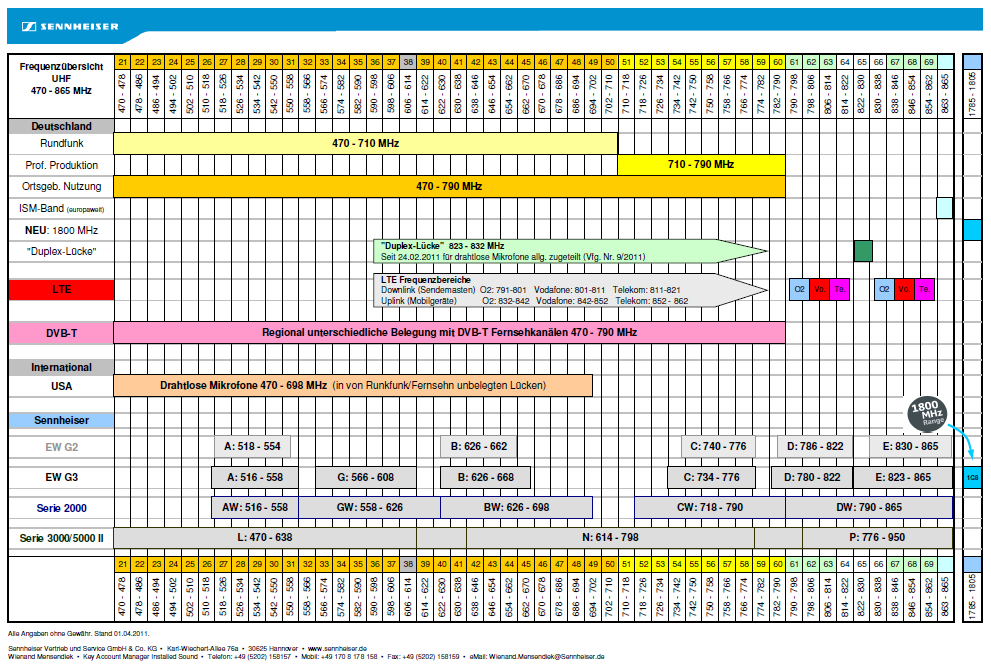UHF Wireless Microphones
General
Early wireless microphones operated in the FM low band from 26 MHz to 50 MHz.
The quarter-wave antennas were quite large (antenna length is inversely proportional to the frequency).
VHF wireless systems work in the range from 169 MHz to 216 MHz (TV channels 7-13, 174-216 MHz).
UHF wireless systems were operating in the higher UHF bands in the frequency range from 470 MHz up to 958 MHz (TV channels 21-81). This frequency range offers available bandwidth, it is less vulnerable to RF interference and because of the propagation conditions has the best performance for the purpose of wireless microphone signal transmission. UHF microphones working at a low power range of 10 to 50mW can be used perfectly in buildings. Signals are crossing walls between rooms but transmission is blocked between entire buildings. In different buildings the same frequencies can be used with only little risk of interference. Also the UHF band usually has low levels of interference from other equipment used in the same environment.
Shorter wavelengths (1,8MHz, 2,4MHz range) can be used too, but have strong disadvantages. Because of the shorter wavelength the distribution around any obstacle is more critical and the possible maximum transmission distance is shorter.
Most UHF systems use PLL (Phase Locked Loop) frequency synthesis in the transmitters and receivers to provide an excellent frequency stability. The PLL systems generate
frequencies from a pre-programmed channel plan in the memory in the transmitters and receivers. The receivers have a self-detect function for unusable channels.
Because of the switching from analog to digital TV channels in nearly all countries large changes within the frequency tables take place. The freed ranges from older analog TV channels are used for new services. With these re-arrangements many of the former UHF channels for wireless microphones are now prohibited or will be prohibited soon.
Users of UHF equipment need to change equipment.
German UHF Frequency Table, Sennheiser Products

|
| Courtesy of: Sennheiser Germany, 2011 |

|
| UHF channels in Germany from 03.03.2010 |
General Wireless Spectrum



